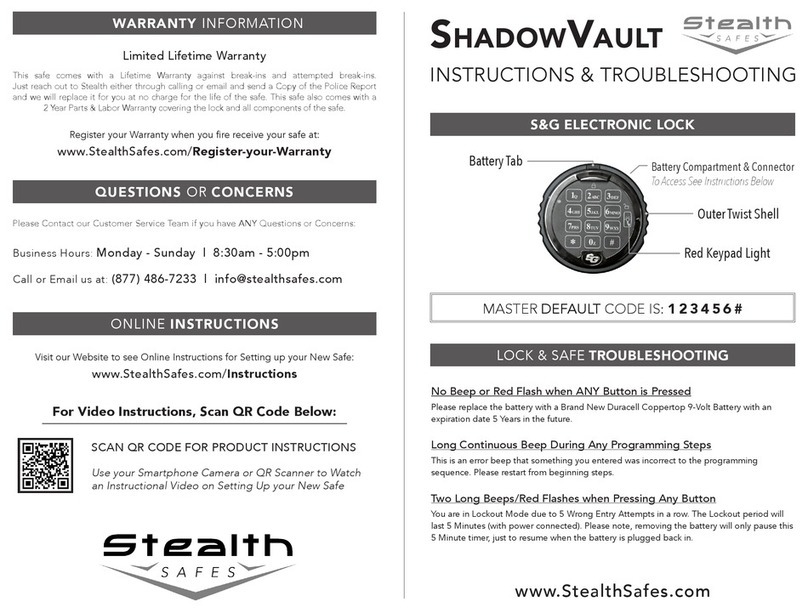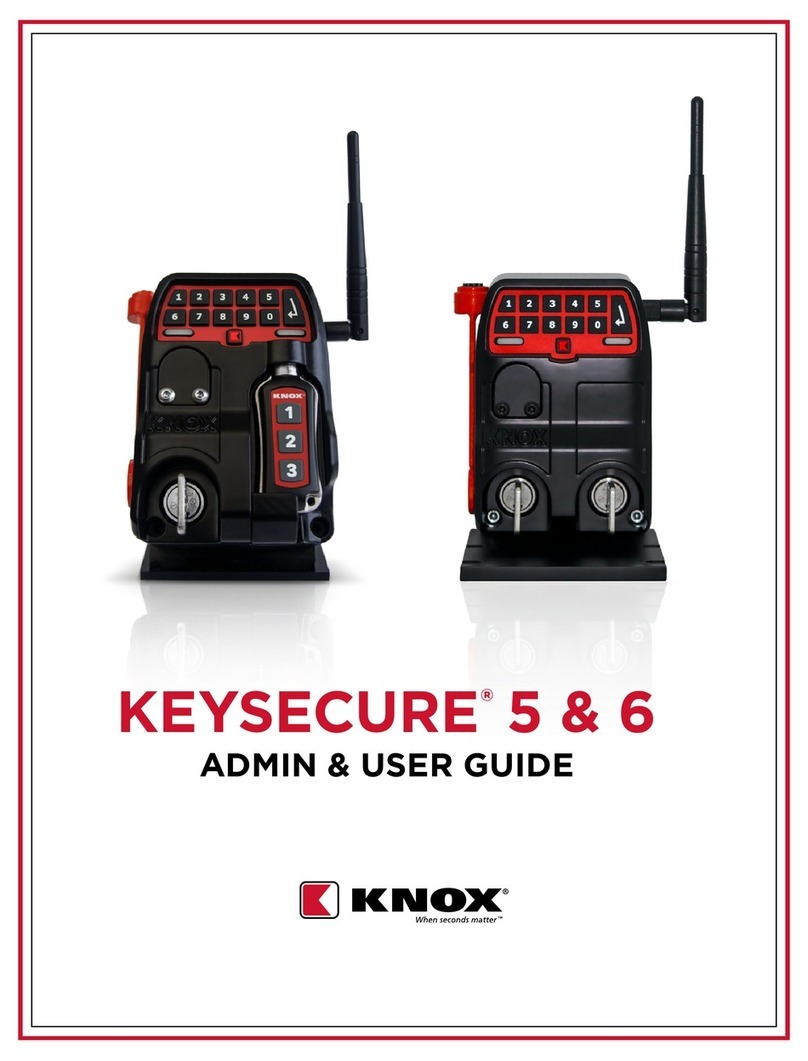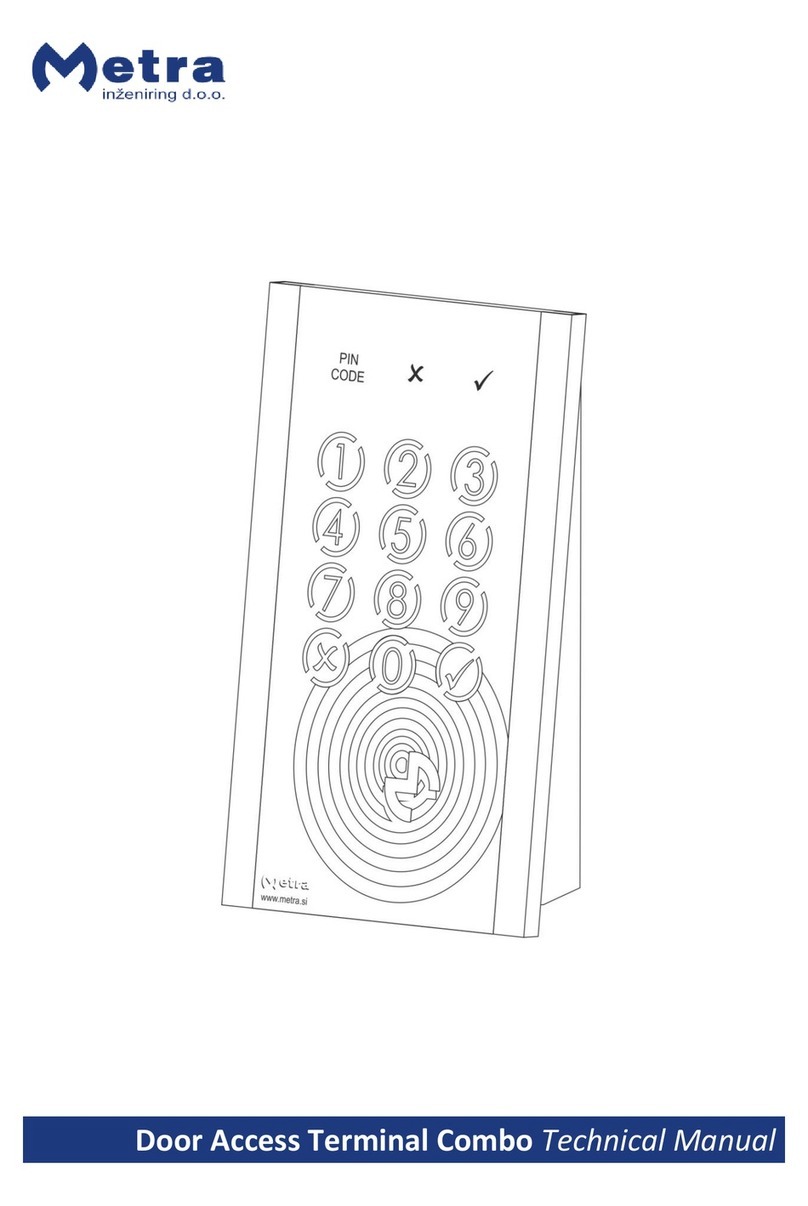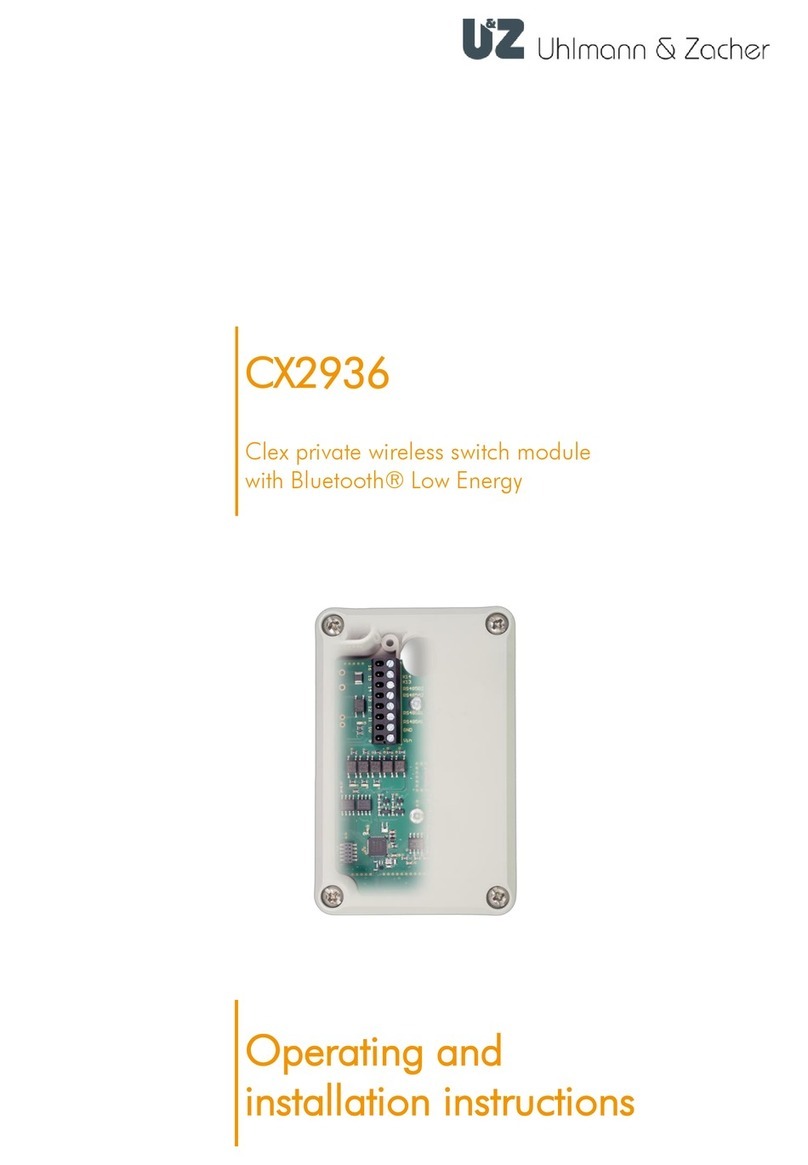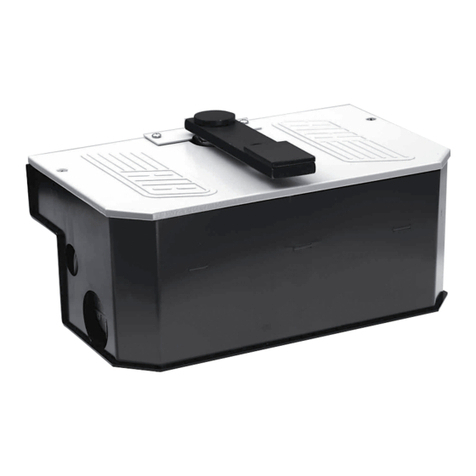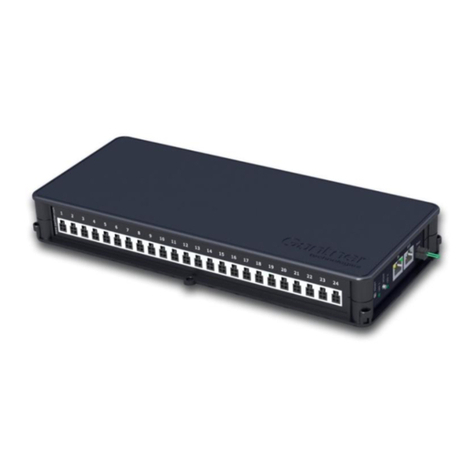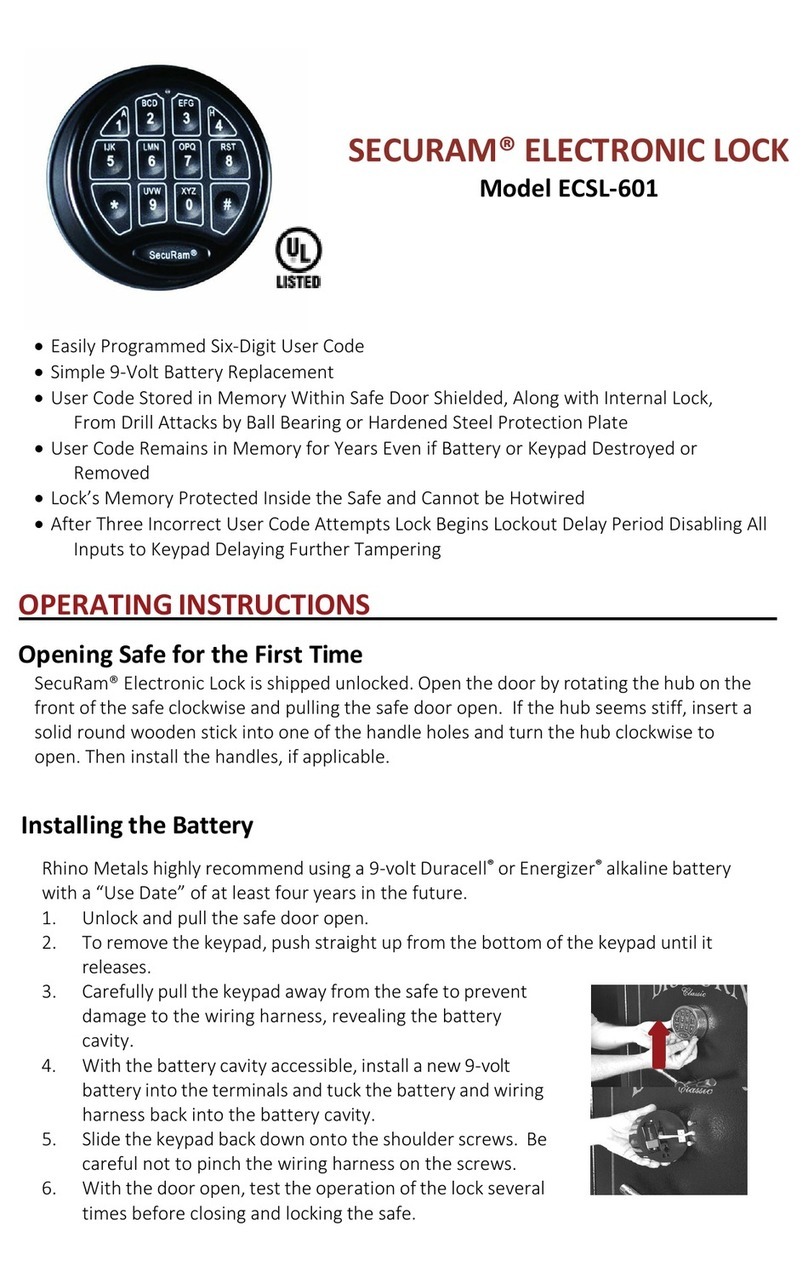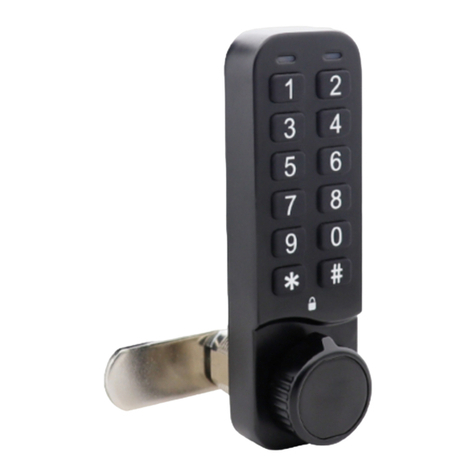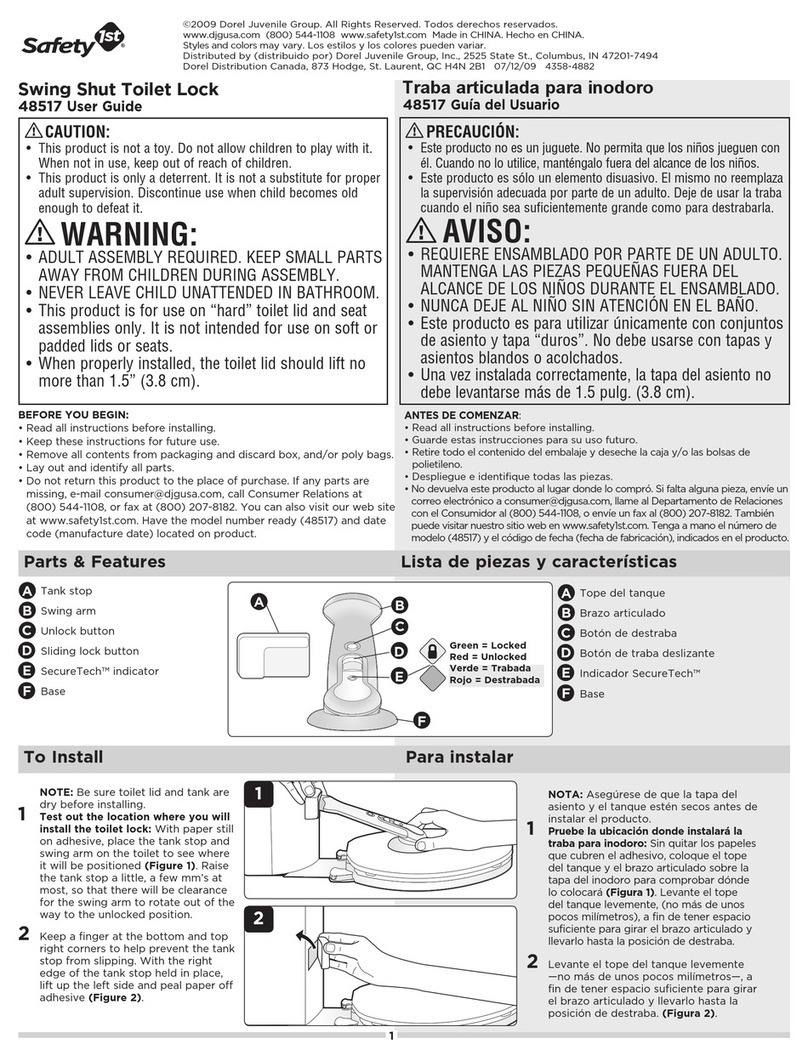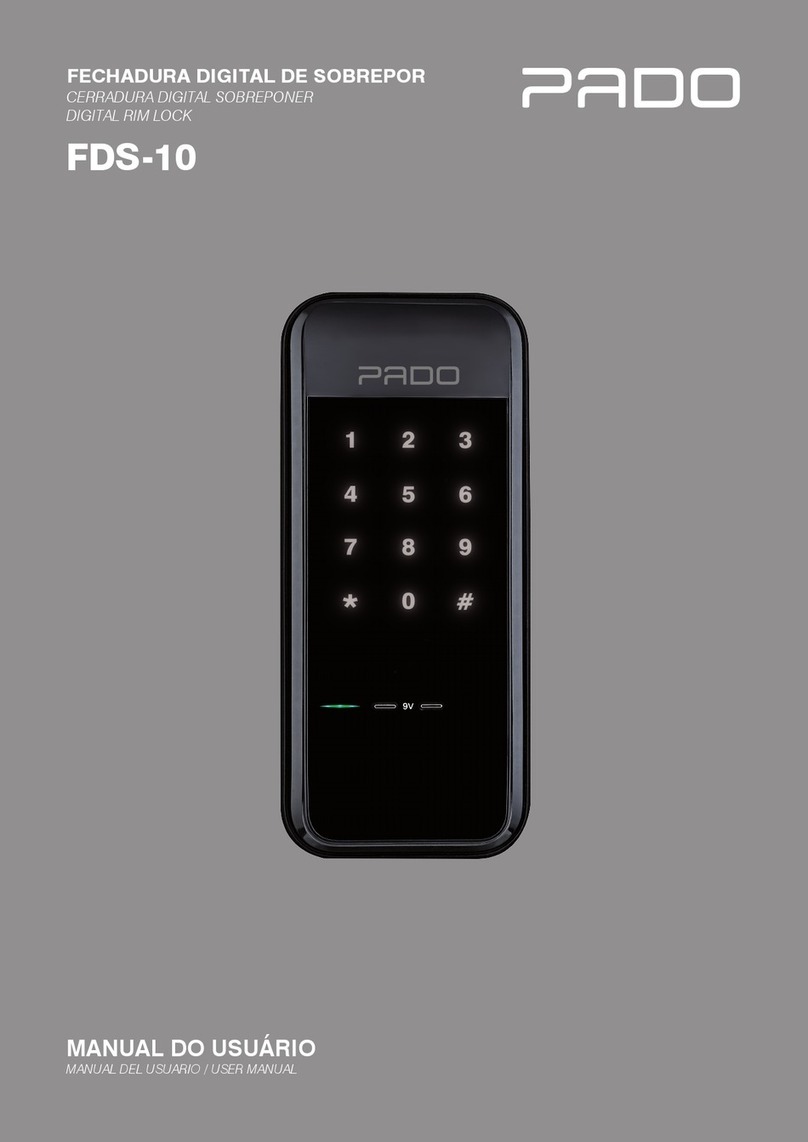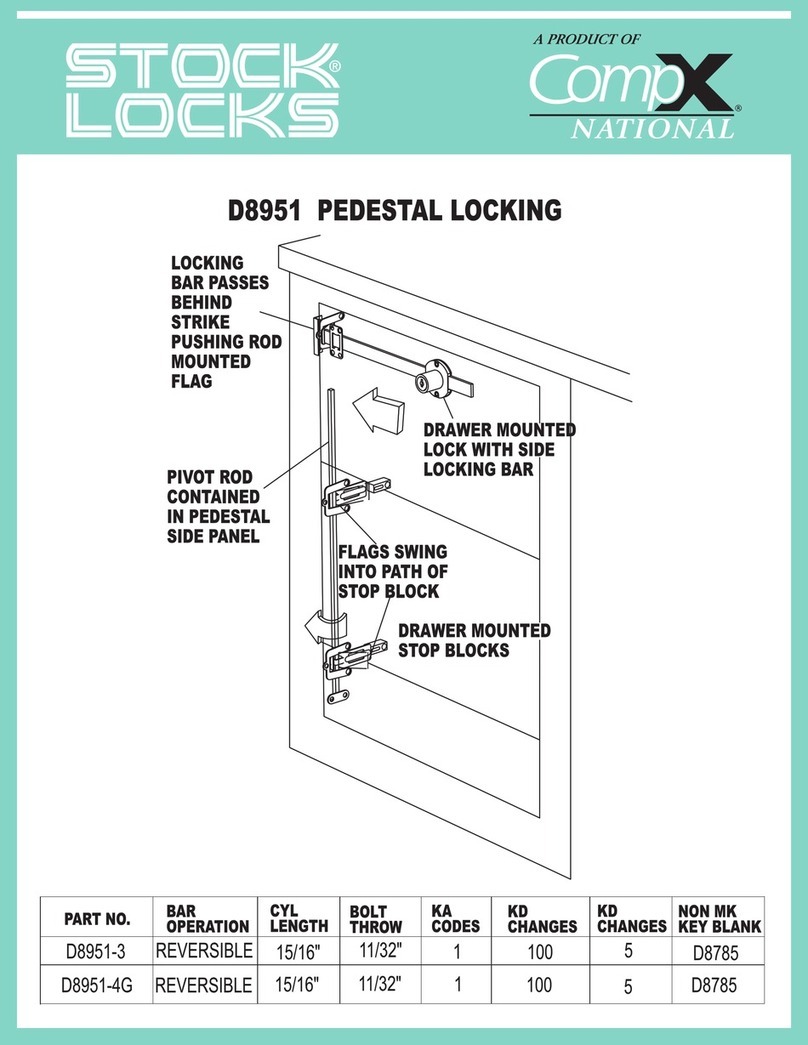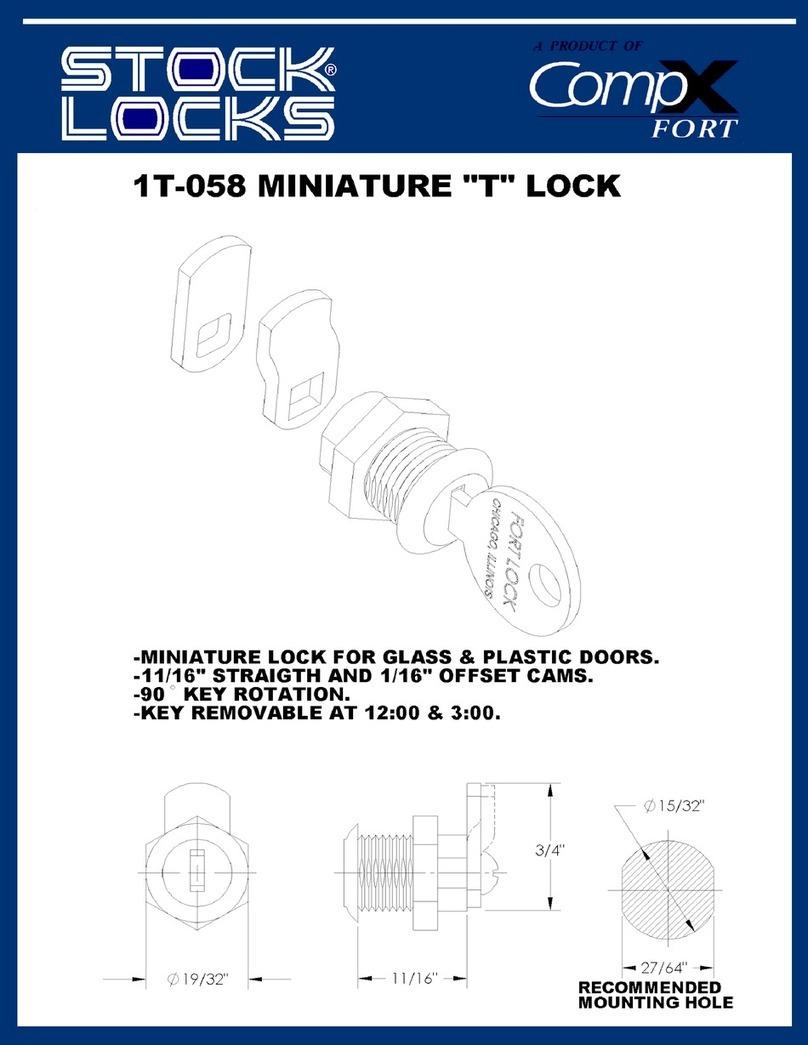CX6192 PRODUCT DESCRIPTION
5
3Product description
3.1 Functional description
The electronic cabinet lock CX6192 is a Clex private system product. The reading
unit, the communication electronics, the mechanical system and power supply,
are integrated within the cabinet lock.
Different transponder carriers can be used as key in the CX6192, for example,
ISO card or key fob.
CX6192 has the following system properties:
Up to 60,000 key/locking authorizations can be stored
Up to 512 events in the cabinet lock be recorded
Up to 32 holidays can be configured
Automatic summer and winter time changeover
5,296 locking groups
Permanent engagement possible without additional power consumption
Up to 20 time circuits can be programmed for daily activation
(automatic permanent engagement)
Engagement time can be programmed from 1 to 15 seconds
Pre-configured by default for 868 MHz wireless networking
Different locking plates are available
Suitable for all doors having a thickness of up to 20 mm
Can be mounted in vertical and horizontal position, for left or right
cabinet doors
Advanced setting options: free selection of cabinet, mail box function,
No cabling required
Can be combined with other systems (for example Clex private)
Versions for HITAG 1, MIFARE®and LEGIC ®Transponder can be
supplied
3.1.1 Authorisations
There are up to 296 groups in the Clex prime locking system. When a cabinet
lock becomes member in one or more of these groups, all keys that are also
members of this group are authorised to open the cabinet lock provided the key
access rights are not restricted by setting time zones.
In addition to the normal groups, there are 5000 other groups in the Clex prime
locking system. Each key can be a member of up to 16 of these other groups.
An individual authorisation entitles a key to operate one cabinet lock. Individual
authorisations are written either on the key (up to 16 individual authorisations per
key) or in the cabinet lock (up to 60,000 individual authorisations), depending on
the type of the key (writeable, not writeable).
Keys with toggle authorisation can permanently engage a cabinet lock, hence the
cabinet door can be opened even without a key.

